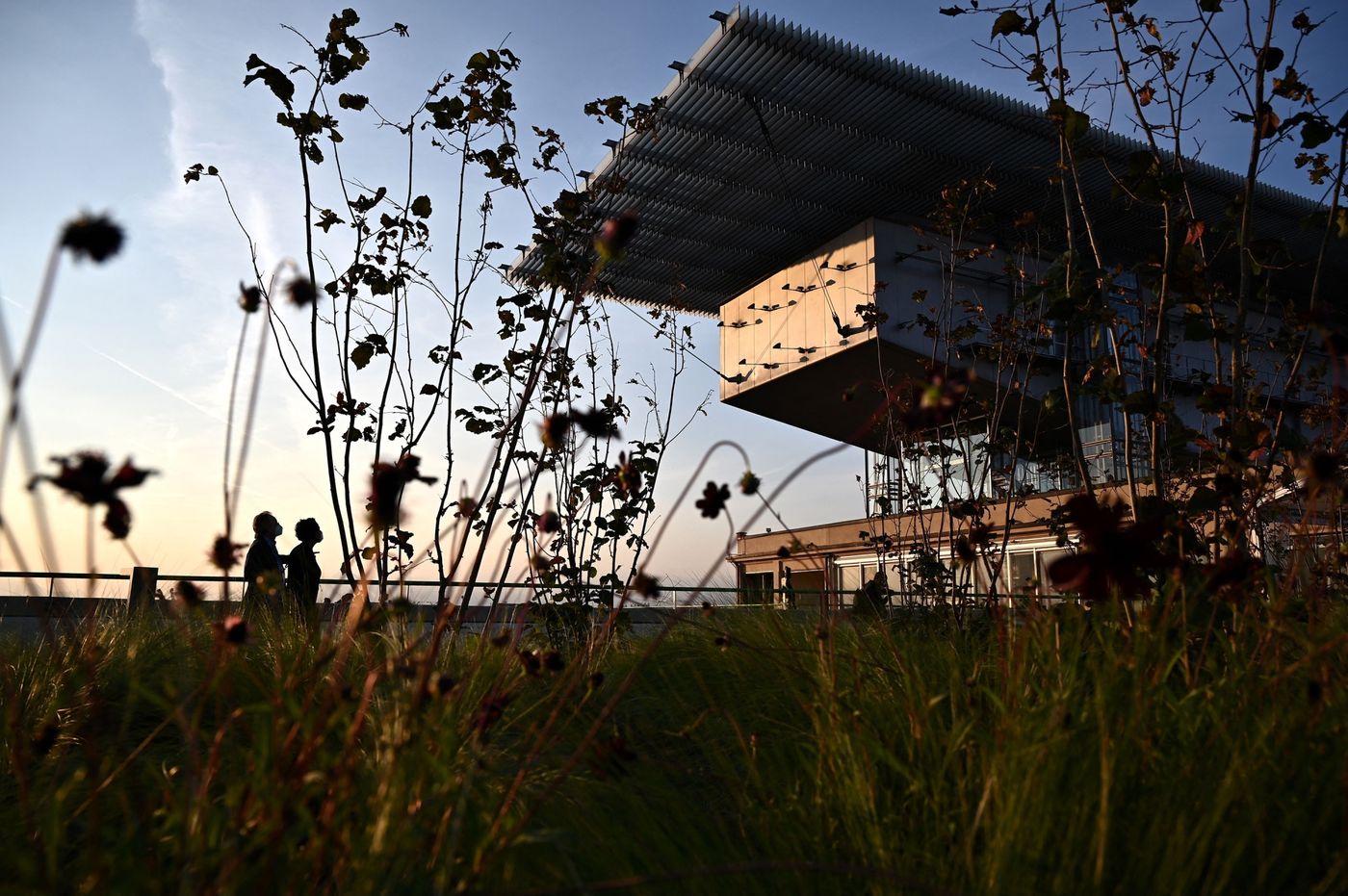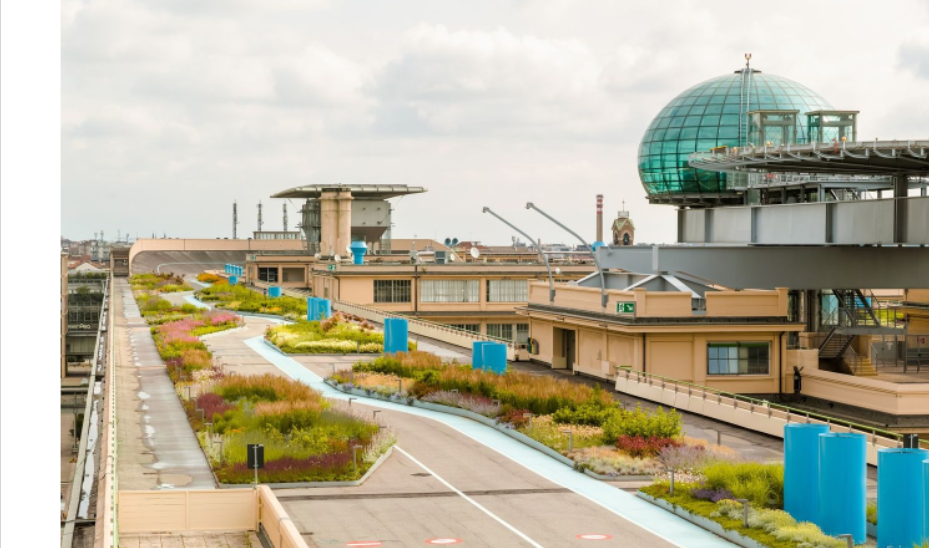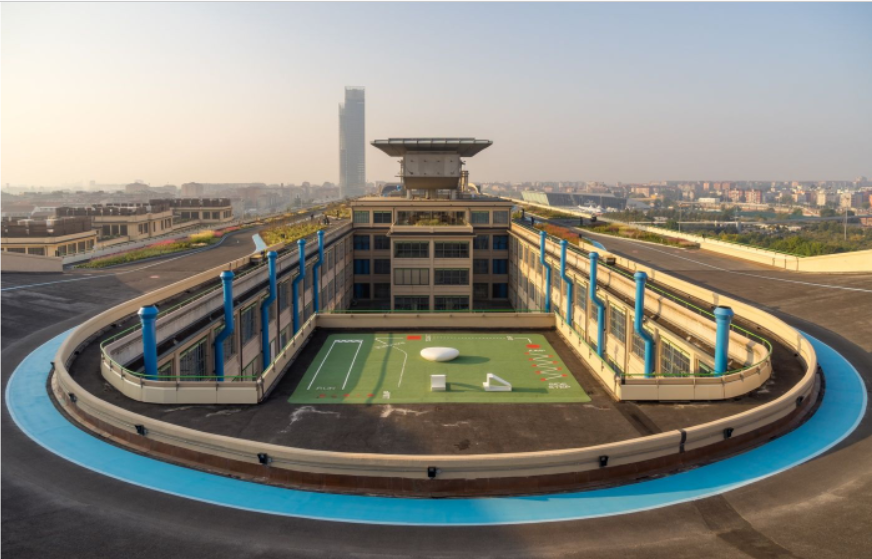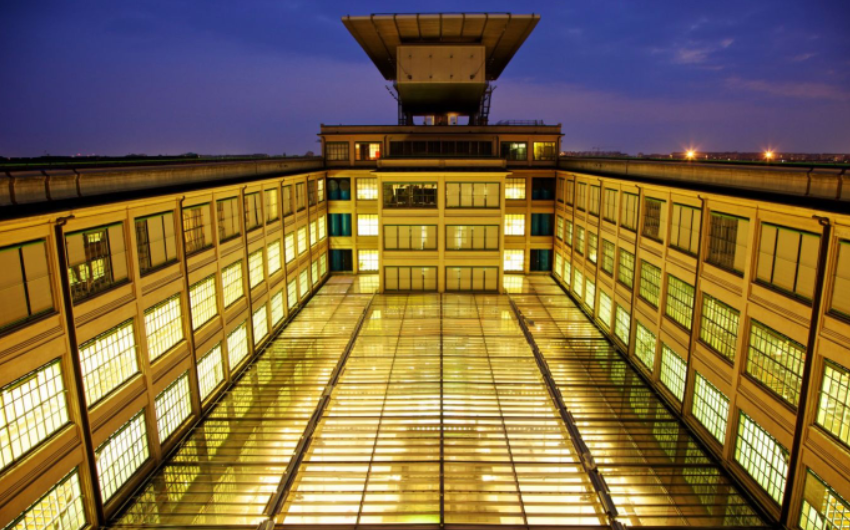 By: Kazim Raza Bhatti Pride News Turin’s latest public amenity is a large
By: Kazim Raza Bhatti Pride News Turin’s latest public amenity is a large
rooftop garden and art space where visitors will be able view installations or even do yoga
among meadow-like beds of flowering grasses. Called La Pista 500, it will offer another activity
you don’t normally associate with a park or gallery: test-driving electric cars.
This juxtaposition of art, nature and manufacturing may seem unlikely, but the garden is not
located on just any post-industrial site. In a city synonymous with Fiat, the project is a makeover
of the specially constructed 4.2 acre rooftop track that caps what was once Europe’s largest car
factory.
 The Lingotto stopped producing cars in the 1980s, after which its lower floors were converted
The Lingotto stopped producing cars in the 1980s, after which its lower floors were converted
into an auditorium, conference center and mall by Renzo Piano. The Pinacoteca Agnelli gallery,
which manages the roof garden and has populated it with art installations, took over the
factory’s top floor (but not its roof) in 2002. The palazzina in front of the factory that once
housed Fiat’s management was sold earlier this year by Stellantis NV, the conglomerate that now
owns the car brand. The garden project is thus less of the start of a discussion about what to do
with Turin’s ex-industrial heritage than the end of one. Fiat, meanwhile, has continued to produce
gas-burning vehicles despite La Pista 500’s dedication to EVs alone, although the company’s
promise to go 100% electric by 2030 does place it at the industry’s vanguard.
 A complex stretching out like a vast ocean liner, the plant — named the Lingotto after the
A complex stretching out like a vast ocean liner, the plant — named the Lingotto after the
neighborhood where it’s located — was considered a marvel when it was completed in 1923.
It functioned both figuratively and literally as a pedestal to display the wonders of the Italian
company’s production line, not just the central motor of Turin’s economy but an international icon
of progress. Le Corbusier called it “one of the most impressive sights in industry.
 Laid out as an upwards-looping ramp, the factory would take in raw materials for car
Laid out as an upwards-looping ramp, the factory would take in raw materials for car
construction on the ground floor. The vehicles were then assembled on a production line
passing up successive floors of the ramp, until they arrived at the factory’s best-known and
most spectacular feature: its rooftop circuit, where they received a test drive-cum-lap of honor
before being sent to market.
Laid out as an upwards-looping ramp, the factory would take in raw materials for car
construction on the ground floor. The vehicles were then assembled on a production line
passing up successive floors of the ramp, until they arrived at the factory’s best-known and
most spectacular feature: its rooftop circuit, where they received a test drive-cum-lap of honor
before being sent to market.
The circuit itself became a well-known monument of sorts even during its working lifetime. Its
panoramic views and steeply sloping curves made a cameo appearance in the 1969 film The
Italian Job.
 The intended symbolism of sowing part of the track’s asphalt with plants — and switching it
The intended symbolism of sowing part of the track’s asphalt with plants — and switching it
from gas-powered to electric cars — could hardly be more explicit: A complex that was once
a temple to the internal combustion engine now re-emerges as a peaceful green island where
verdant gardens, public art and cleaner, lower-emissions vehicles co-exist.
 Pride News Daily NEWS
Pride News Daily NEWS





